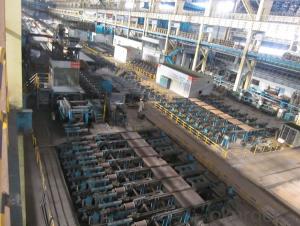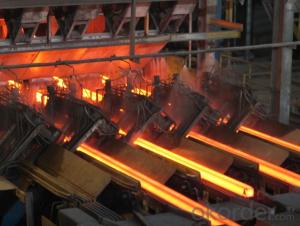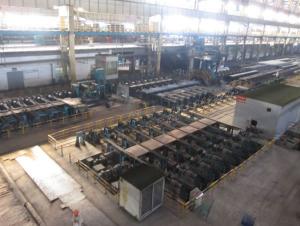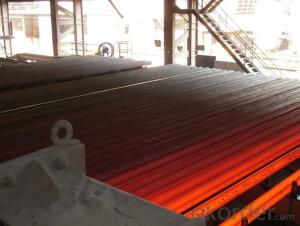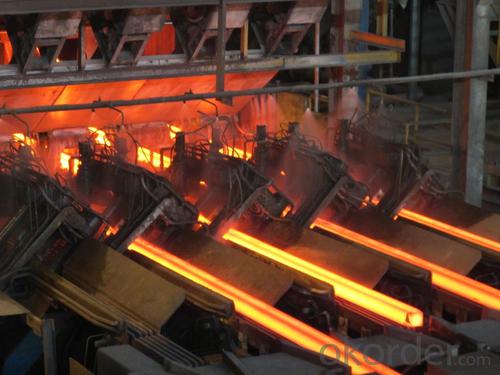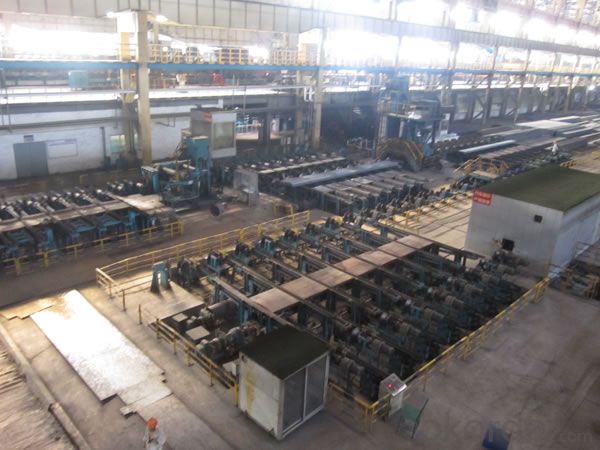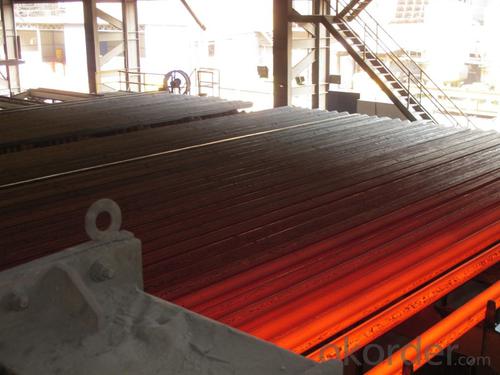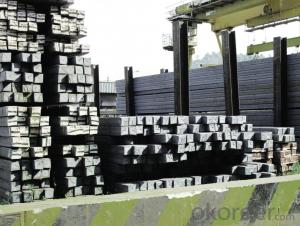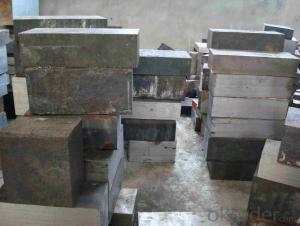Prime quality square alloy steel billet 100mm Q235
- Loading Port:
- Tianjin
- Payment Terms:
- TT OR LC
- Min Order Qty:
- 100 m.t.
- Supply Capability:
- 10000 m.t./month
OKorder Service Pledge
OKorder Financial Service
You Might Also Like
Structure of Prime quality square alloy steel billet 100mm Q235
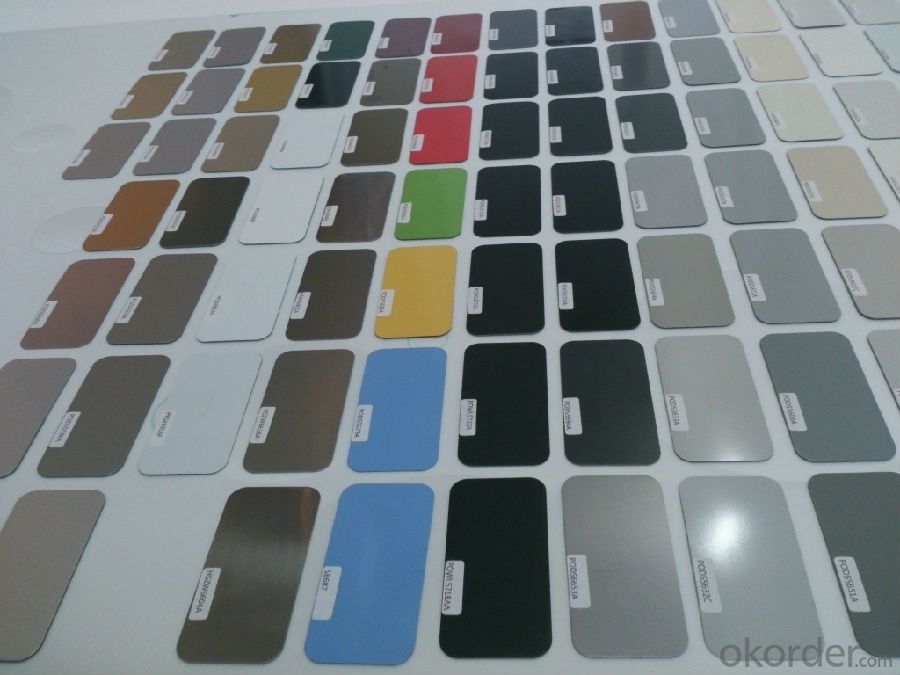
Description of Prime quality square alloy steel billet 100mm Q235
1. Prepainted steel coil is coated with organic layer, which provides higher anti-corrosion property and a longer lifespan than that of galvanized or galvalume steel sheets.
2. The base metals for prepainted steel coil consist of cold rolled, HDGI Steel, electro-galvanized and hot-dip alu-zinc coated steel. The finish coats of prepainted steel coil can be classified into groups as follows: polyester, silicon modified polyesters, polyvinylidene fluoride, high-durability polyester, etc.
3. The production process has evolved from one-coating-and-one-baking to double-coating-and-double-baking, and even three-coating-and-three-baking.
4. The color of the prepainted steel coil has a very wide selection, like orange, cream-colored, dark sky blue, sea blue, bright red, brick red, ivory white, porcelain blue, etc.
5. The prepainted steel coils can also be classified into groups by their surface textures, namely regular prepainted sheets, embossed sheets and printed sheets.

Main Feature of Prime quality square alloy steel billet 100mm Q235
Uncoated CR steel sheet
With the features of in line with the international highest standards in demension and shape, excellent surface finish and properties, the products are mainly used in home appliance and automobile industries.
Galvanized steel sheet(include HDG and EG)
With the features of good corrosion resistance, the products are mainly used in automobile, home appliance, electronics, building and machinery manufacture industries, etc.
Precoated steel sheet
With the features of enviromental protection and good processablility, long lasting surface durability, rich in colors, the products are maily used in building, home appliance and furniture industries, etc.
Applications of Prime quality square alloy steel billet 100mm Q235
Construction
Manufacture anticorrosion, industrial and civil architecture roof boarding, roof grille
Light industries
Home appliance's case, civil chimney, kitchen utensils
Auto industry
Corrosion resistant parts of cars
Agriculture
Food storage, meat and aquatic products' freezing and processing equipment
Commerce
Equipments to store and transport materials, and packing implements

Specifications of Prime quality square alloy steel billet 100mm Q235
Product | Prime quality square alloy steel billet 100mm Q235 |
Material Grade | SGCC / SGCH / DX51D+AZ, etc |
Thickness | 0.6-3.0mm |
Width | 500-1500mm |
Tolerance | Thickness: +/-0.02mm , Width:+/-2mm |
Zinc-coating | Z30-150g/m2 |
Technique | Raw material: Hot rolled steel coil --> Cold rolled_>hot dipped galvalume |
Surface | Dried, Chromated, Unoiled |
Spangle | Regular spangle , small spangle, zero spangle |
ID | 508MM 610MM |
Coil weight | 1-25MT |
Export package | Cardboard inner sleeves, Waterproof paper, galvanized steel covered and steel strip packed |
FAQ of Prime quality square alloy steel billet 100mm Q235
We have organized several common questions for our clients,may help you sincerely:
1. How Can I Visit There?
Our company is located in Tianjin City, China, near Beijing. You can fly to Tianjin Airport Directly. All our clients, from home or aboard, are warmly welcome to visit us!
2. How Can I Get Some Sample?
We are honored to offer you sample.
3. Why choose CNBM?
Our delivery time about 15-20days for standard sizes, if you have other requirements like hardness, quanity and width ,it is about 20-40days. But don't worry we also try our best for the delivery time ,because time longer and our cost is higher.
- Q: Can steel billets be used for making sculptures?
- Certainly, sculptures can be made using steel billets. Steel, being a highly versatile material, offers numerous advantages for sculpting. Its robustness and durability make it ideal for crafting large-scale sculptures that can withstand the elements outdoors. Manipulating and shaping steel billets into various forms is a simple task, enabling artists to unleash their creativity and give life to their concepts. Moreover, steel can be welded, polished, and painted, providing additional avenues for customization and artistic expression. In essence, steel billets provide sculptors with a sturdy and adaptable medium to fashion distinctive and enduring sculptures.
- Q: How often is it? What is the range of temperature in the process of rolling? What is the temperature of the final rolling?
- Cold rolling is not consideredThe temperature at which the billet begins to roll (surface) is generally 1000-1150 degrees
- Q: How do steel billets compare to other forms of raw steel material?
- Steel billets possess unique advantages when compared to other forms of steel. Their exceptional strength and durability are well-known. They are manufactured using a meticulously controlled process that ensures uniform composition and consistent grain structure, resulting in superior mechanical properties. Consequently, steel billets are highly suitable for industries requiring robust and dependable steel, such as construction, automotive, and manufacturing. Additionally, steel billets offer remarkable machinability. Their uniform shape and size facilitate easy handling and processing, thereby reducing waste and improving production efficiency. This proves especially advantageous for manufacturers utilizing precision machining techniques to create intricate and complex components. Another benefit of steel billets lies in their versatility. They can be forged, rolled, or extruded into various shapes and sizes, allowing for customization according to specific requirements. This adaptability renders steel billets suitable for an extensive range of applications, ranging from structural beams and bars to pipes and rods. Moreover, steel billets boast a relatively low carbon content, making them more ductile compared to other forms of raw steel material. This enhanced ductility enables simpler shaping and forming, making steel billets particularly appropriate for hot working processes like forging and rolling. In summary, steel billets offer numerous advantages over other forms of raw steel material. Their high strength, excellent machinability, versatility, and ductility make them the preferred choice for many industries. Whether it is for structural purposes or the manufacturing of complex components, steel billets possess the necessary properties and flexibility to meet a wide range of requirements.
- Q: What is the role of steel billets in the construction of bridges and tunnels?
- Steel billets play a crucial role in the construction of bridges and tunnels as they serve as the raw material for manufacturing various structural elements. These billets are heated and shaped into beams, girders, and columns that provide the necessary strength and support required for these infrastructure projects. By using steel billets, engineers can ensure the durability, load-bearing capacity, and overall structural integrity of bridges and tunnels, making them safer and more reliable for transportation and other purposes.
- Q: What are the different welding techniques used for steel billets?
- There are several different welding techniques that can be used for steel billets, depending on the specific requirements and desired outcome of the project. Some of the most commonly used techniques include: 1. Shielded Metal Arc Welding (SMAW): Also known as stick welding, SMAW is a versatile and widely used welding technique. It involves using a consumable electrode coated in flux, which provides a shielding gas to protect the weld pool from atmospheric contamination. SMAW can be used for both thick and thin steel billets and is suitable for various applications. 2. Gas Metal Arc Welding (GMAW): GMAW, also known as MIG (Metal Inert Gas) welding, is a popular technique for welding steel billets. It uses a continuous wire electrode and a shielding gas to protect the weld pool. GMAW is known for its high productivity and is often used for welding thin to medium steel billets. 3. Flux-Cored Arc Welding (FCAW): FCAW is similar to GMAW but uses a tubular electrode filled with flux instead of a solid wire. The flux provides a shielding gas and can also contain additional alloying elements. FCAW is commonly used for welding thick steel billets and in outdoor or windy environments where shielding gas could be easily blown away. 4. Gas Tungsten Arc Welding (GTAW): GTAW, also known as TIG (Tungsten Inert Gas) welding, is a precise and versatile technique frequently used for high-quality welds on steel billets. It utilizes a non-consumable tungsten electrode and a separate filler material if needed. GTAW produces clean and precise welds but is slower compared to other techniques. 5. Submerged Arc Welding (SAW): SAW is a welding process that involves the formation of an arc between a continuously fed wire electrode and the steel billet. The arc is shielded by a granular flux, which also provides additional alloying elements and protects the weld pool. SAW is commonly utilized for welding thick steel billets, such as in the manufacturing of large structures or pipes. Each of these welding techniques has its advantages and disadvantages, and the choice of technique depends on factors such as the type and thickness of the steel billet, desired weld quality, productivity, and environmental conditions. It is crucial to select the appropriate welding technique and ensure proper training and safety precautions are followed to achieve successful and durable welds on steel billets.
- Q: How are steel billets used in the production of oil and gas components?
- Steel billets are used in the production of oil and gas components as they serve as the primary raw material for manufacturing various parts and equipment such as pipes, valves, flanges, and fittings. These billets are heated and shaped through processes like rolling, forging, or extrusion to achieve the desired dimensions and properties required for the specific component. The strength, durability, and corrosion resistance of steel make it an ideal choice for oil and gas applications, ensuring the reliability and integrity of the produced components.
- Q: Are steel billets prone to corrosion?
- Corrosion is not an inherent issue for steel billets. However, the likelihood of corrosion occurring depends on the specific steel type used and the environmental conditions in which they are placed. For instance, stainless steel billets possess a considerable amount of chromium, resulting in the formation of a protective layer on the surface that greatly enhances their resistance to corrosion. Conversely, carbon steel billets lack this protective layer, leading to increased vulnerability to corrosion. The presence of moisture, oxygen, and particular chemicals can expedite the corrosion process. Therefore, it is essential to handle and store steel billets appropriately, while also applying suitable coatings or treatments to minimize the risk of corrosion.
- Q: How do steel billets contribute to the manufacturing of defense equipment?
- Steel billets are an essential raw material in the manufacturing of defense equipment due to their high strength, durability, and versatility. These billets serve as the building blocks for various components, such as armored vehicles, aircraft carriers, submarines, and weapons systems. Through careful shaping, forging, and machining processes, steel billets can be transformed into critical parts with specific properties, such as ballistic resistance, structural integrity, and corrosion resistance. Therefore, steel billets play a crucial role in ensuring the reliability and effectiveness of defense equipment, providing the necessary strength and performance required for military operations and national security.
- Q: How are steel billets used in the production of oil and gas exploration equipment?
- Steel billets are commonly used in the production of oil and gas exploration equipment due to their strength and durability. These billets are shaped and machined into various components such as valves, pumps, drilling tools, and pipelines, which are crucial for the extraction and transportation of oil and gas. The high-quality steel ensures that the equipment can withstand harsh operating conditions, including high temperatures, pressure, and corrosive environments, thereby ensuring the safety and reliability of oil and gas exploration operations.
- Q: What are the different types of surface finish inspection methods for steel billets?
- Steel billets can undergo various surface finish inspection methods to determine their quality and suitability for further processing or use. Some commonly used methods for inspecting the surface finish of steel billets include the following: 1. Visual inspection: This method involves visually examining the surface of the billet for any irregularities, such as cracks, pits, scratches, or other imperfections. Although it is a quick and cost-effective method, it may not be able to detect subtle defects. 2. Magnetic particle inspection: This method entails magnetizing the billet's surface and applying fine iron particles to it. Any surface cracks or defects will cause a leakage of the magnetic field, attracting the iron particles and making them visible under appropriate lighting conditions. 3. Dye penetrant inspection: This method involves applying a liquid dye to the billet's surface. The dye seeps into any surface cracks or defects, and after a certain period, excess dye is removed. A developer is then applied, which draws out the dye from the cracks and defects, making them visible. 4. Ultrasonic testing: This method utilizes high-frequency sound waves transmitted through the steel billet. When the waves encounter any surface irregularities, such as cracks or voids, they are reflected back. By analyzing the time taken for the waves to return, the size and depth of the defects can be determined. 5. Eddy current testing: This non-destructive testing method utilizes electromagnetic induction to detect surface defects. An alternating current is passed through a coil, creating a magnetic field. When the coil is near the billet's surface, any defects disrupt the magnetic field, causing a change in the electrical impedance. This change is measured and analyzed to identify surface defects. Each of these inspection methods has its advantages and limitations. The choice of method depends on specific requirements, the size and shape of the billet, and the desired level of accuracy. Manufacturers can ensure the quality and reliability of the steel billets by employing these surface finish inspection methods before further processing or using them in various applications.
Send your message to us
Prime quality square alloy steel billet 100mm Q235
- Loading Port:
- Tianjin
- Payment Terms:
- TT OR LC
- Min Order Qty:
- 100 m.t.
- Supply Capability:
- 10000 m.t./month
OKorder Service Pledge
OKorder Financial Service
Similar products
Hot products
Hot Searches
Related keywords
